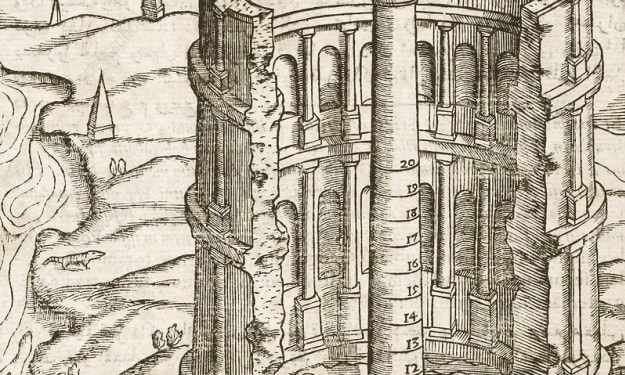D-Day at 80: The Unsung Hero Eisenhower Lauded as a War Winner
"Eisenhower once said, 'Had Higgins not crafted those LCVPs, our troops would never have managed an open beach landing.'"

Eight decades since D-Day: The Unsung Hero Eisenhower Lauded as a War Winner
As we mark the 80th anniversary of the Normandy invasion, it's time to remember a figure whose unconventional path and innovations played a pivotal role in the Allied victory. Andrew Jackson Higgins, often overlooked, was not your typical war hero. A maverick in the defense industry, Higgins had a rough-and-tumble past, having been expelled from high school over fights and known for his penchant for bourbon—even while working. Despite facing bankruptcy several times, Higgins became a key player in World War II, described by Dwight Eisenhower as "the man who won the war for us."
Eisenhower's endorsement wasn't an overstatement. In conversations with historian Stephen Ambrose, which feature in Ambrose's book on D-Day, Eisenhower emphasized, "If Higgins had not designed and built those LCVPs, we never could have landed over an open beach. The whole strategy of the war would have been different." These Landing Craft, Vehicle, Personnel, or Higgins Boats, were crucial in transporting troops directly onto the beaches on June 6, 1944, with each vessel carrying 36 men at a time.
Higgins' journey to this invention started much earlier when he created a shallow-draft boat designed for oil drillers and trappers along the Mississippi River and the Gulf of Mexico. Originally named the Eureka boat, it caught the military's attention in the late 1930s. However, the original design, which required troops to climb over the sides, exposed them dangerously to enemy fire. Undeterred, Higgins directed his chief engineer to integrate a bow ramp, significantly enhancing troop safety and efficiency during landings. By 1939, this design had been successfully tested and was soon to become a war staple.
Throughout the war, Higgins Industries didn't just stop at LCVPs. The company expanded to manufacture PT boats, smoke generators, gun turrets, and more, employing up to 85,000 people and securing $350 million in government contracts, making Higgins one of the largest defense contractors globally.
Despite his monumental contributions, Higgins faced challenges post-war. His company received fewer contracts, faced numerous strikes, and ultimately, Higgins sold most of his facilities. He passed away in 1952 but left a lasting legacy. Today, the National World War II Museum, located on Andrew Higgins Drive in New Orleans and originally known as the National D-Day Museum, features a new permanent exhibit titled "Bayou to Battlefield: Higgins Industries During World War II," ensuring that the memory of Higgins and his contributions endure.
Higgins' legacy is not just a testament to his engineering prowess but also a reflection of his gritty resolve and undeterred vision. His life story, from his beginnings in the lumber and boat-building industries to becoming a linchpin in one of the most significant military operations in history, is a narrative of overcoming adversity and seizing opportunity. The boats he designed not only facilitated a crucial part of the D-Day landings but also symbolized innovative military tactics that forever changed amphibious warfare.
His boats, known for their robustness and versatility, became iconic symbols of American ingenuity and the relentless pursuit of victory. The simplicity of Higgins' design—allowing for rapid and safe disembarkation under heavy fire—proved so effective that these vessels were used beyond World War II, serving various military and civilian purposes. This adaptability underscored Higgins' foresight in design principles that prioritized functionality and reliability under pressure.
Moreover, Higgins' personal habits and characteristics, such as his reputed penchant for bourbon, add color to his profile as a nonconformist who thrived on challenging the status quo. These anecdotes provide a human element to his story, making him more relatable and his accomplishments more remarkable. His ability to navigate personal and professional adversities—be it his battles with bankruptcy or his clashes with labor movements—illustrates a man who was as complex as the era he helped shape.
As his company's fortunes waned after the war, Higgins demonstrated resilience in the face of dwindling government contracts and labor unrest. The decline of Higgins Industries speaks to the often-unforgiving aftermath of war for even its most crucial contributors. Yet, the establishment of the museum on the street that bears his name, and the continuing interest in his work and its impact, highlight a legacy that endures beyond his lifetime.
Through exhibitions and educational programs, Higgins' story and the broader narrative of the World War II industrial mobilization continue to inspire and educate. His tale is a compelling reminder of how individual creativity and determination can intersect with historical events to forge outcomes that resonate through generations.
About the Creator
Olawale Abaire
Content Writer || Blogger || Ghostwriter || SEO Expert
Enjoyed the story? Support the Creator.
Subscribe for free to receive all their stories in your feed. You could also pledge your support or give them a one-off tip, letting them know you appreciate their work.





Comments
There are no comments for this story
Be the first to respond and start the conversation.